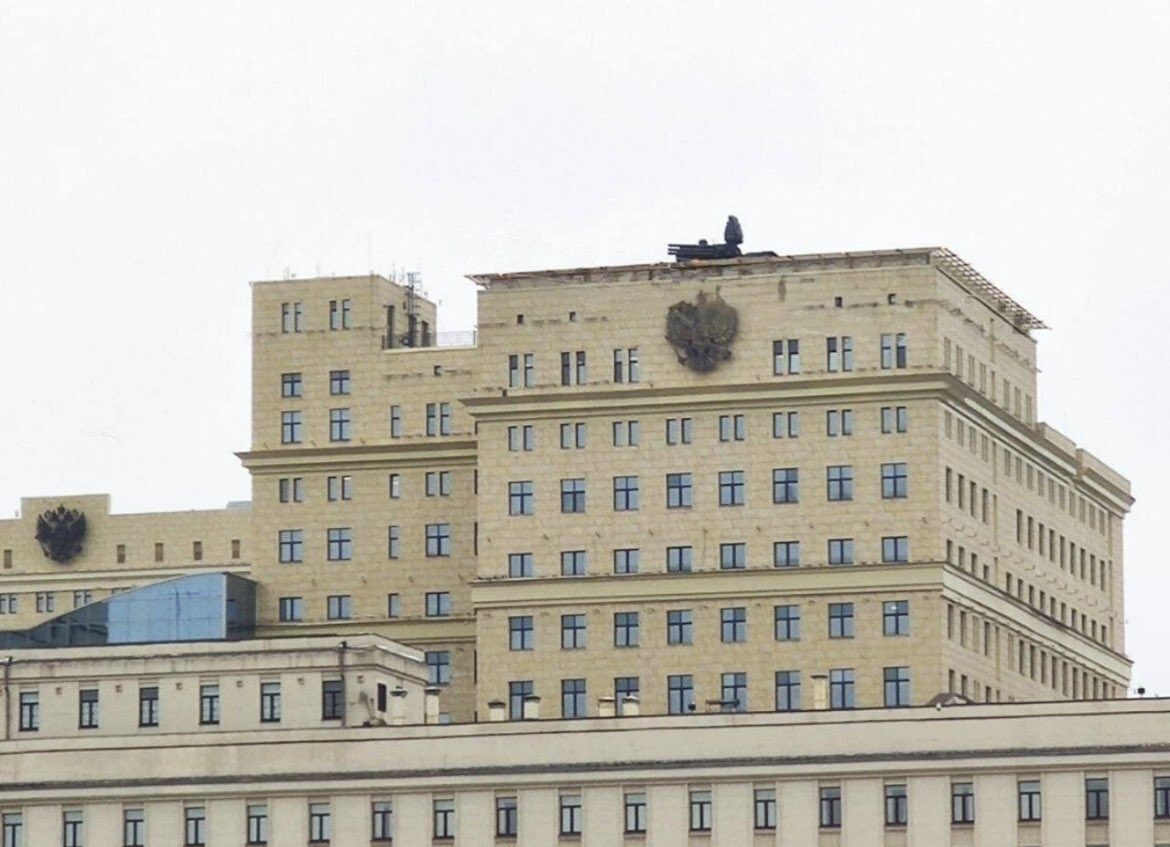Photographs published on social media on Thursday showed a Pantsir missile system had been installed on the roof of an eight-story building used by the Russian defence ministry along the Moskva River.
Another video showed the air defence system being lifted on to the roof of an education building in Moscow's Taganka district, 1.5 miles south-east of the Kremlin.
The short-to-medium-range systems are used to defend against aircraft, helicopters, and cruise missiles. The Russian military has also said they could be used against smaller targets, such as military and commercial drones, which have become ubiquitous on the battlefield since Vladimir Putin launched his wide-scale invasion in February.
Images of the missile systems in Moscow emerged a day before western defence officials were set to meet at Ramstein airbase in Germany to agree on a new military aid package to Ukraine that could include the provision of heavy tanks.
Comment: They will be discussing much more than just how much 'aid' Ukraine needs.
The US has already pledged nearly $2bn in further military aid to Ukraine, including a Patriot air sefence system meant to protect Ukrainian cities from Russian missiles.
But Russian officials have issued warnings ahead of the meeting, attempting to dissuade Nato countries from providing more advanced weapons by claiming that these could potentially spark a nuclear conflict.
"The defeat of a nuclear power in a conventional war can provoke the beginning of a nuclear war," wrote Dmitry Medvedev, the former president, who has become a leading hawk as deputy chairman of Russia's security council.
Russian military officials did not immediately confirm the installation of the missile systems. However, several Russian media outlets have also reported on the deployment of long-range S-400 missile systems in Moscow in recent weeks. The S-400 and Pantsir-S1 systems are often used in tandem.
The missile systems have appeared in the wake of a Russian bombing campaign that has used missiles and drones to target Ukrainian cities and infrastructure, leading to scores of deaths across the country.
Comment: 'Scores of deaths', of soldiers? Russia has mostly bombed military installations and infrastructure required by the military. Even a propaganda rag like The Guardian has to admit that, despite dozens and dozens of Russian airstrikes, civilian casualties have been incredibly low. The highest number reported just a day or so ago was actually Kiev's fault: Ukraine's attempt to shoot down Russian missile caused it to hit Dnepr residential building
A Russian X-22 anti-ship ballistic missile hit an apartment block in the city of Dnipro last week, killing 45.
Pro-Kremlin bloggers on Thursday said that the appearance of the missile systems in Moscow showed that the Russian military leadership was concerned now about attacks on their own cities.
Comment: There have already been covert sabotage attacks within Russia proper: Airbase attacks deep inside Russia point to CIA covert ops and a planned war
"It means that [the leadership] perfectly understand all the risks and understand that strikes against Moscow and the regions are just a question of time," wrote Alexander Kots, a prominent Russian journalist who supports the Russian war in Ukraine. "It's good to begin planning in advance instead of after the first strikes."
The appearance of the defensive missile systems highlights Russia's lack of success in the war. Mysterious explosions have taken place at military sites in Crimea, and at several airbases used by Russian strategic bombers last month deep inside Russian territory. Ukrainian officials have also said they have begun testing long-range drones that can travel up to 1,000 km (621 miles), potentially putting Moscow in striking distance.
"Russia has long given a very high priority to maintaining advanced ground-based air defences, but it is increasingly clear that it is struggling to counter air threats deep inside Russia," the UK defence ministry wrote last year, a day after the explosions at Russia's Engels airbase.




Smart play by Putin. I foresee more of it forthcoming & perhaps other countries as well. A little more assurance in an age of deliberate uncertainty. If I was a CIC I would do the same.